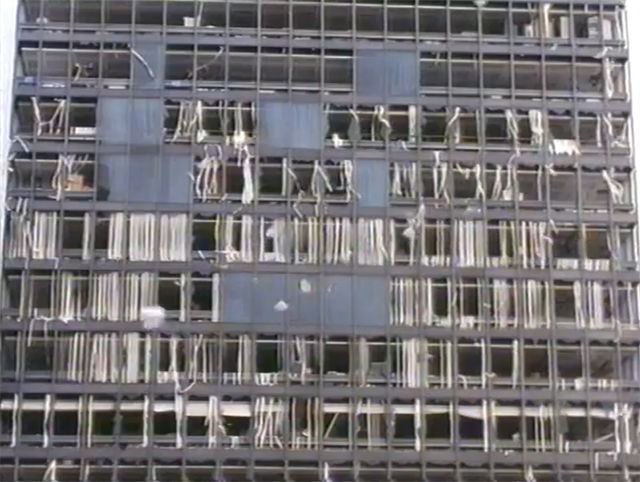I’ve been meaning to write for some time about Patrick Keiller’s film Robinson in Ruins which is set in the rural landscape around Oxford and who’s themes of our relationship to history, place and the contemporary landscape fit in rather well with this blog. But I’m feeling rather nostalgic for big city tonight, having just watched his earlier film London so I’m going to talk about that instead. The images on this page are all stills from the film. When we moved to Somerset 3 years ago I wasn’t getting out and about in London as much as I used to. I was working most of the time and in any case we were about to have a baby and life becomes about other things. Now when I go up for a day or weekend I do much more than I did when I actually lived there. I have always loved exploring London, discovering new places, observing its architectural and cultural juxtapositions. Keiller’s London presents a beautifully nuanced view of the city, capturing with great subtlety and poetry how people find ways of building a relationship to a city.
Ridley Road Market in Dalston – my old patch
The film has apparently been made by an unnamed narrator who has returned to London after some years abroad. The narrator accompanies his old friend Robinson on a series of ‘expeditions’ across London, ostensibly to help with Robinson’s research on 18th and 19th century literary figures who are known to have spent time in London. Set over a 9 month period in 1992 the film is more overtly political than Robinson in Ruins. The narrator comments in a deadpan voice about homelessness, the run-down public transport system and the dominance of London by city finance. His steady melancholy is the anchor to Robinson’s more extreme emotions which almost turn to dispair when Labour fail to beat the Conservatives in the 1992 general election. The country is in recession after the boom of the late 80s and the city is under siege from an IRA bombing campaign that strikes at the very heart of the financial system with the attack outside the Baltic exchange. The commentary is that of a returned exile quietly observing a place he knows well but to which he feels little connection.
Commercial Union Building (now St Helens) in the City after the IRA Baltic Exchange bombing
Despite the gloomy subject matter the mood is far from bleak. Nature is often present, offering respite from the scruffy buildings and traffic. The images illustrate the narrator’s words but they also catch human activity in the scenes that suggest other stories of people carrying on their lives, people who have found a place in the sprawling city. The narrator speaks of the potential individual isolation and alienation of the Modern city but the images also convey its vibrancy and diversity. Robinson deals with it by always being on the move. His meandering excursions are his way of making a bond with the place from who’s values he feels detached. There is hope and there is also humour. If you don’t watch carefully you might miss the camera lingering fleetingly on a temporary sign on a lamppost pointing to the Hayward Gallery’s Margritte exhibition (spelled wrong), or Robinson’s suggestion that the game of golf be reformed to make it more artistic.
‘In the supermarket we found a cafe with friendly staff and pleasant inexpensive food but there was no sign of anyone writing poetry.’
Railings at Oval made from stretchers used as beds in tube stations during the blitz.
To me the great thing about a big city you know well is that there are so many different ways into it, so many different lives being lived, so much scope for the individual imagination. We can easily be ground down by its problems, the poverty that exists despite the ever increasing wealth generated and the vested interests that prevent anything much being done to change the situation. If you just see the problems then you don’t get anything out of it. That is what one’s relationship with London is like. It doesn’t notice you or care whether or not you are there, but by observing its subtleties, listening to the stories of its people and being open to its opportunities it gives a lot in return and that is how you gain an affection for it.
In the final scene the narrator observes the street from his window. He describes it as the street where he lives and remarks on the changes that have occurred in the 9 months he has lived there. At the beginning of the film he talked with the distracted air of an outsider but now something is different. He talks as if he has become part of the city and the fact that he has lived through and noticed some of its changes somehow binds him into it. Through his explorations with Robinson he has found his place.


















